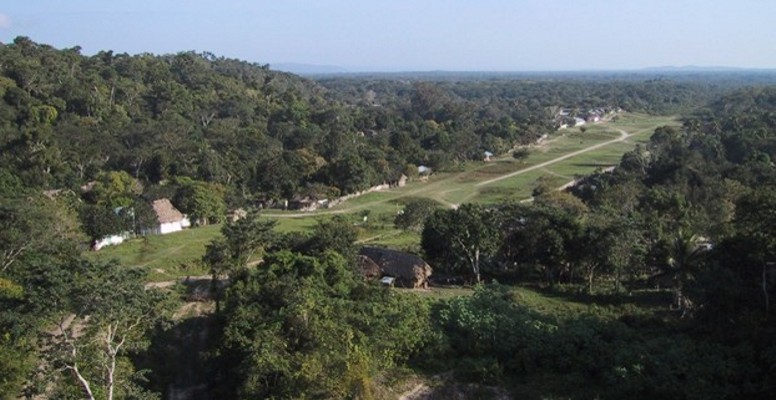 |
|
Areal view of Uaxactún, Flores, Petén
|
Although to date a very large portion of the habitat present in 1990 has been conserved, the process of land use conversion accelerated from 2000 to 2008. In addition, forest fires have become more and more dangerous, and may be magnified by drought events predicted to become more frequent due to global climate change. Similarly, the increase in human populations that demand more access to resources and land is a key factor for the future of the MBR. Rigorous analysis of all these factors and their underlying causes should be used to plan a long-term comprehensive conservation strategy.
In spite of the threats, significant advances have been made recently in the conservation of the MBR. Possibly the most remarkable is the Guatemalan state’s recent recovery of an estimated 110,653 hectares of illegally-occupied land inside the reserve. The recovery of these areas is an unprecedented achievement, strengthening the possibility of conserving the MBR for future generations.
The recovered area is:
- Five times the size of Guatemala City
- The same size as the departments of Sololá or Totonicapán
- Equivalent to 150,000 regulation-size soccer fields
Five crosscutting themes to be used in planning specific strategies and actions were identified through reflective exercises conducted in a number of different contexts. These themes are:
- Enforcing the law
- Environmental Protection and Fire Prevention
- Economic Incentives and Alternatives
- Monitoring and Investigation
- Communication and Advocacy
Planning exercises that include the majority of actors with legitimate interest in the MBR need to be conducted in order to plan specific actions that that revolve around these themes, and that are adapted to the reality of each distinct geographical area in the MBR. However, urgent actions that would help protect the enormous potential of the MBR over the short term and on which there is currently consensus include:
- Increasing the application of the law within the MBR, in a comprehensive manner specifically related to specific natural and cultural resources.
- Increasing the protection of areas in good condition, and strengthening the recovery of problematic areas.
- Creating economic opportunities and incentives to improve the welfare of legal populations of the MBR, and to keep them as allies in the conservation of the reserve’s natural and cultural heritage.